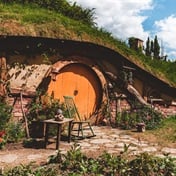Kathmandu - For the hardy few, climbing Everest is a bucket-list feat of endurance, danger and wonder. But Kami Rita Sherpa's 23rd record summit of the world's highest peak on Wednesday was just another day at work.
Sherpa, 49, reached the summit on Wednesday morning, breaking his own record that he set last year, his expedition company confirmed.
A guide for more than two decades, he first summited the 8 848m (29 029-foot) peak in 1994 when working for a commercial expedition.
"I did not climb for world records, I was just working. I did not even know you could set records earlier," he said last month before setting off for Everest base camp.
The accomplished Nepali climber has also conquered other challenging 8 000m peaks including the world's second-highest mountain, K2 in Pakistan.
Last year he ascended Everest for the 22nd time, breaking the previous record of 21 summits he shared with two other Sherpa climbers.
Ethnic Sherpas from the valleys around Everest have become synonymous with high-altitude climbing, crucial for Nepal's lucrative mountaineering industry, which nets the impoverished Himalayan country more than $4 million a year.
With their unique ability to work in a low-oxygen, high-altitude atmosphere, they are the backbone of the industry, helping clients and hauling equipment up Himalayan peaks.
"It would be impossible for many foreign climbers to summit mountains without the help of a Sherpa," said Ang Tshering Sherpa, former president of the Nepal Mountaineering Association.
"They are critical for Nepal's mountaineering and take a huge risk to keep this industry running," he added, pointing out that the government does not give them the recognition and financial security they deserve.
Nepal has issued a record 378 permits costing $11 000 each for this year's spring climbing season, sparking fears of bottlenecks en route to the summit if poor weather cuts down the number of climbing days.
Most Everest hopefuls are escorted by a Nepali guide, meaning about 750 climbers will tread the same path to the top in the coming weeks.
And at least 140 others are preparing to scale Everest from the northern flank in Tibet, according to expedition operators.
This could take the total past last year's record of 807 people reaching the summit. The mountain also claimed five lives last year.
Mountaineering has become a lucrative business since Edmund Hillary and Tenzing Norgay made the first ascent of Everest in 1953.
There are mounting concerns, however, that the numbers are unsustainable, with fears of dangerous overcrowding as well as trash and other environmental problems.




 Publications
Publications
 Partners
Partners












